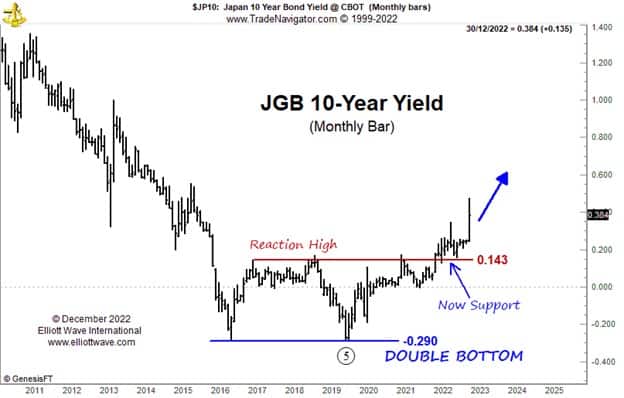Bish Bash BoJ
The Bank of Japan follows the charts as memories of consumer price deflation fade.
“Bank of Japan stuns markets with yield control policy change,” thundered the Financial Times. “Global Markets Jolted as BOJ Surprises with Yield Policy Change,” roared Bloomberg.
The Bank of Japan (BoJ) announced this week that it was changing its policy of keeping the 10-year government bond yield capped at 0.25%. The cap will now be at 0.50%. The 10-year yield has rocketed higher. This has been received as a shock by conventional media and analysts. Elliott Wave International (EWI) subscribers, though, should just shrug.
For the past few months, EWI has been warning readers that the Bank of Japan would very likely be abandoning its policy of yield curve control. Our insight wasn’t some special information from officials, but merely the price action of the bond market. We noticed that the 10-year Japanese Government Bond (JGB) yield had started to exhibit support at the reaction high point of what was very probably a major double bottom pattern. Elliott wave analysis also pointed to the fact that an historic low had been established in 2019.
We last showed this chart in October. Under the headline, “And the next “shock” comes from…Japan,” we stated:
“When the BoJ does abandon its policy, as it surely will, expect the 10-year yield to zoom higher and the Japanese yen to strengthen. Such an event will come as a “shock” to most people, but you will be prepared.”
And the day before the Bank of Japan’s action we wrote to subscribers, “…watch out for a potential announcement from the Bank of Japan about its yield curve control policy.”
Contrary to conventional wisdom, the “shock” would have been if the Bank of Japan had continued to maintain its policy!
In typical central bank fashion, though, it can’t fully admit defeat just yet and so is still trying to cap the bond yield at 0.50%. The chart points to this barrier being abandoned at some point as well.

